| Katya Sander | e@katyasander.net |
| Languages of 82% Solo show at Gallery Tommy Lund, Copenhagen - March-April 2001. 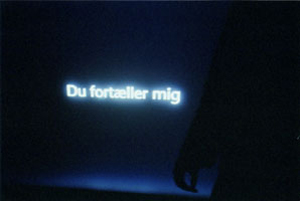 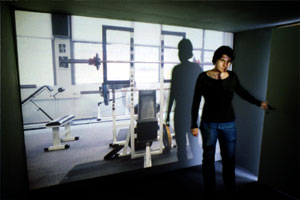 About space, order, language, memory, repetition, and the presence of the body as premises for narration... The site The neighbours of Gallery Tommy Lund is to one side a supermarket, and to the other side a fitness center; both servicing the local inhabitants. To access the gallery, one has to pass either the fitness club or the supermarket on the way. The gallery The gallery itself consists of one larger exhibition space and one smaller, permanent video-cinema, as well as the office and storage space. 2 cinemas For the exhibition “Languages of 82%” I built a copy of the permanent cinema in the exhibition-room, only mirrored. Thus, the gallery then consisted of two, identical but mirrored cinemas, one in each direction.  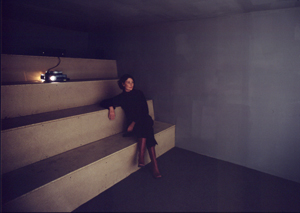 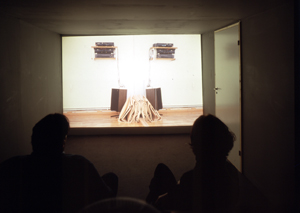 Slide series In each cinema I projected a series of slides shot in each neighboring space, i.e. the supermarket and the fitness center. In the photos I had focused on registering the space and the objects placed in it in a “technical” (often thought of as “neutral”) manner. 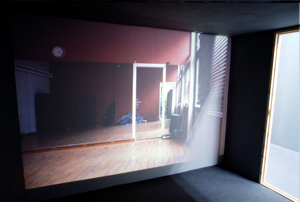  Soundtracks I went to each of these spaces, the supermarket and the fitness center, and asked the persons in charge of the layout of the space, to take a walk with me through it and tell me about it: I asked questions ... Why does the space look the way it does? Why are the things placed where they are? What is the placement supposed to help/hinder? By what logic is the space furnished and organized, how am I supposed to move in it? Why, and who am "I"/the person imagined to use this space supposed to be, with what intentions and agencies?  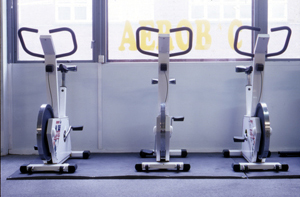 I recorded each of the space-managers explaining the logic behind the way their spaces are arranged, and played those recordings as soundtracks in each cinema. I swapped the soundtracks in relation to the images; the one explaining the fitness center was playing in the cinema with the photos from the supermarket, and the sound explaining the supermarket was playing with the images depicting the fitness center. 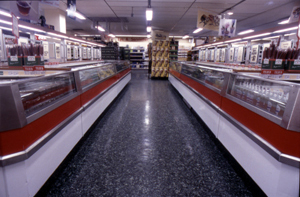 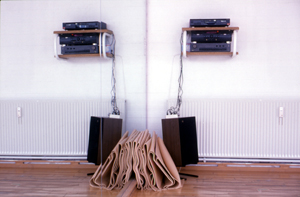 Sound – image The soundtrack and the slide-series were all just continuously running in each their loop. No specific part of the sound was supposed to fit any particular image. Each information was independently in it’s own track. The body, the shadow and the projection The door to the cinema opens up towards the screen, so that one has to walk in and cover the projection area partly with ones body in order to enter and find the seats. Thus, the shadow of the entering and leaving persons will be cast onto the projected image, as well as part of the projection will fall on the body moving in the space. 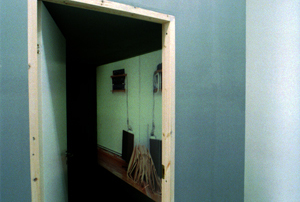 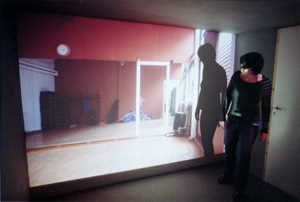 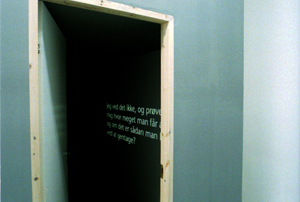 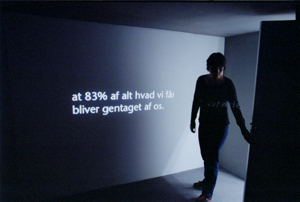 Memory and repetition In order to put together the information from the two cinemas, one had to move between them: remembering the soundtrack from one and the images from the other (while the opposite track was simultaniously running as well). Thus, information about how and why the two spaces are ordered as they are were mixed by chance, but also separated and sorted by memory. The body of the spectator was forced to move around a couple of times to find out the information, back and forth, between images and sounds, and physically bring one to the other. Thus, while moving back and forth, one would inevitably hear or see some sequences many times. The two voices explaining the spaces often mentioned repetition and movement; both in relation to training in the machines of the fitness center, as well as finding ones way around the supermarket. 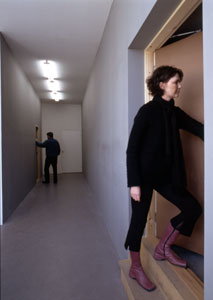 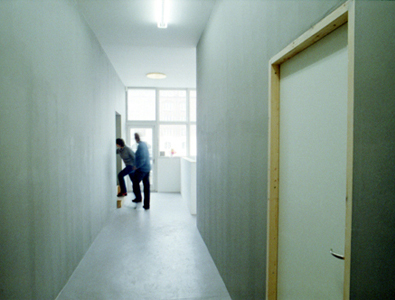 Dialogue Every 3rd or 4th slide was a black background with white text on; resembling the kind of sign used in silence-movies to describe the action of the scenes. The text-signs were each a fragment/sentence of a small dialogue between two persons: A ‘You’ and an ‘I’. The dialogues in the two cinemas are almost identical. The way they differ almost seems to be caused by accidental misunderstanding; a mistake, slippage or rupture... In one dialogue the 'You' tells the 'I' something, in the second it is the 'I' who tells the 'You' something - almost the same. Thus, each dialogue could possible stand for itself, but also connect with the other dialogue in a loop, between the two cinemas; as if the ‘You’ (the other) hears something, and tells it on in the next cinema to the ‘I’, vice versa.     |